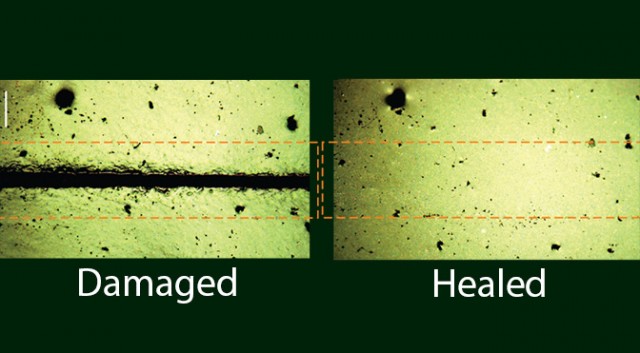Scientists have developed a new type of material that could be used in the future to create self-healing electronics, such as smartphones, batteries, speakers, robotics, and others.
The new material, which doesn’t have a name as of yet, is transparent, stretches up to 50 times its size, conducts ions to generate current, and stitches itself together in about a day, at room temperature, after being completely torn apart.
The new material is the work of Ph.D. Chao Wang, from the University of California, Riverside, who’s been working on it for the past two years.
The material has been called an artifical muscle, albeit is not intended for medical applications. The reason it’s been called this is because it responds and moves to electrical signals, just like a real muscle.
At the chemical level, this material is a combination between an ionic salt and a stretchable polymer (vinylidene fluoride-co-
Wang says he started working on this material being inspired by X-Men character Wolverine, wanting to create a self-healing lithium ion battery that could repair itself when dropped and damaged.
His research advanced as he realized the material is highly transparent and could be used for other purposes, such as a smartphone’s screen.
In the real world, LG G Flex smartphones come with a self-healing cover that repairs itself from knife attacks, but unlike Wang’s material, it doesn’t conduct electric signals.
Wang’s research will take this type of material to the next level, allowing manufacturers to employ it for more than covers. Currently, Wang’s team is testing the material in high-humidity environments, wanting to see how water affects the self-repair operations.
The scientist showed his most recent studies this past week at a meeting of the American Chemical Society.









